Abstract
Studies were carried out to obtain basic information on the pathogenesis of experimental histoplasmosis in Cynomolgus monkeys (Macaca fascicularis) and to determine whether such infected primates can be used as a source of positive reference sera in serological tests for histoplasmosis. Ten monkeys were inoculated intraperitoneally with approximately 9.1 × 107 viable Histoplasma capsulatum yeast-form cells or cell aggregates. At periodical intervals, their sera were tested for antibodies to H. capsulatum by the complement fixation (CF), immunodiffusion, and latex agglutination tests. Selected monkeys were also sacrificed at periodical intervals for cultural and pathological evaluation of their tissues. Infection with H. capsulatum elicited high-antibody responses, and the fungus disseminated to many organs. Initially, the infected monkeys developed CF titers as high as 1:256 to both histoplasmin and H. capsulatum yeast cell antigens. Subsequent challenges boosted the CF antibody titers to levels as high as 1:1,024. All of the monkeys developed M precipitins, and some also produced H precipitins. Latex agglutination titers as high as 1:1,024 were also demonstrated. Our findings show that Cynomolgus monkeys experimentally infected with H. capsulatum by the intraperitoneal route develop a mild form of histoplasmosis and that these animals can be used as a source of reference sera in serological tests for histoplasmosis.
Full text
PDF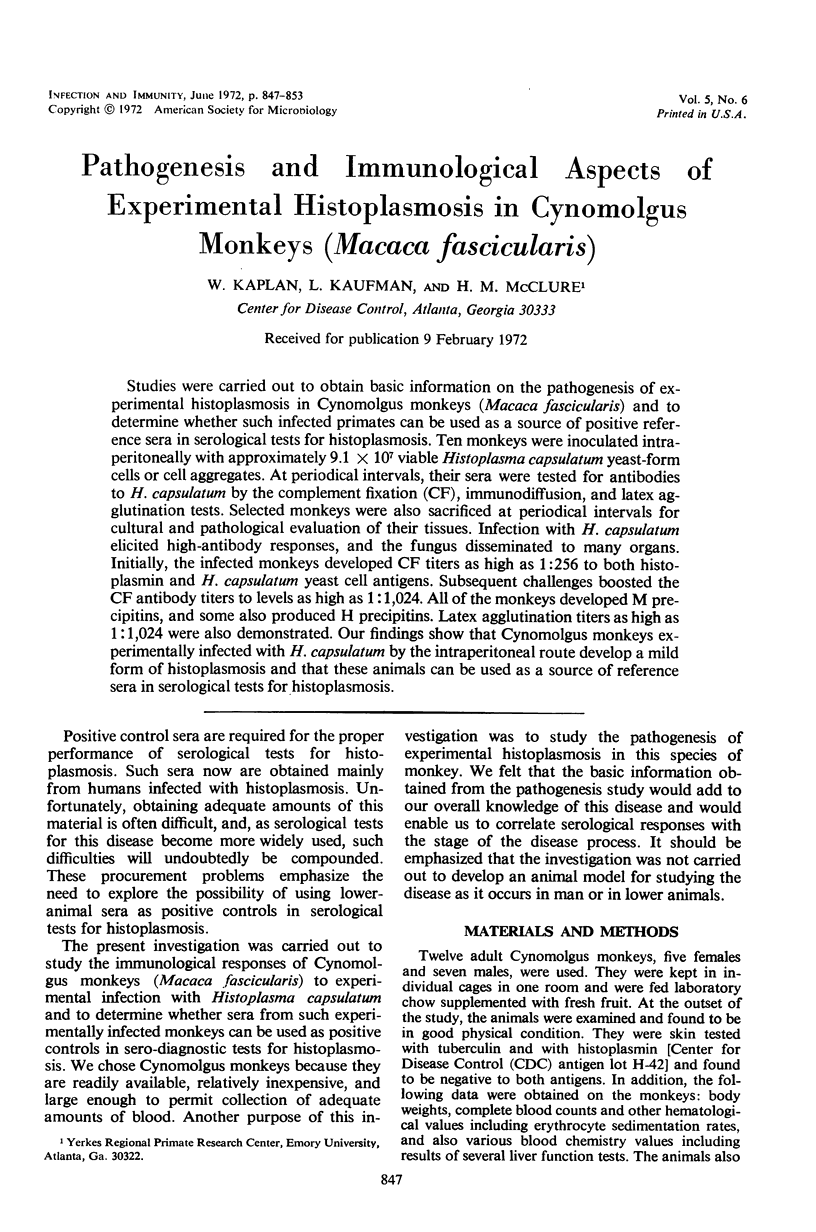
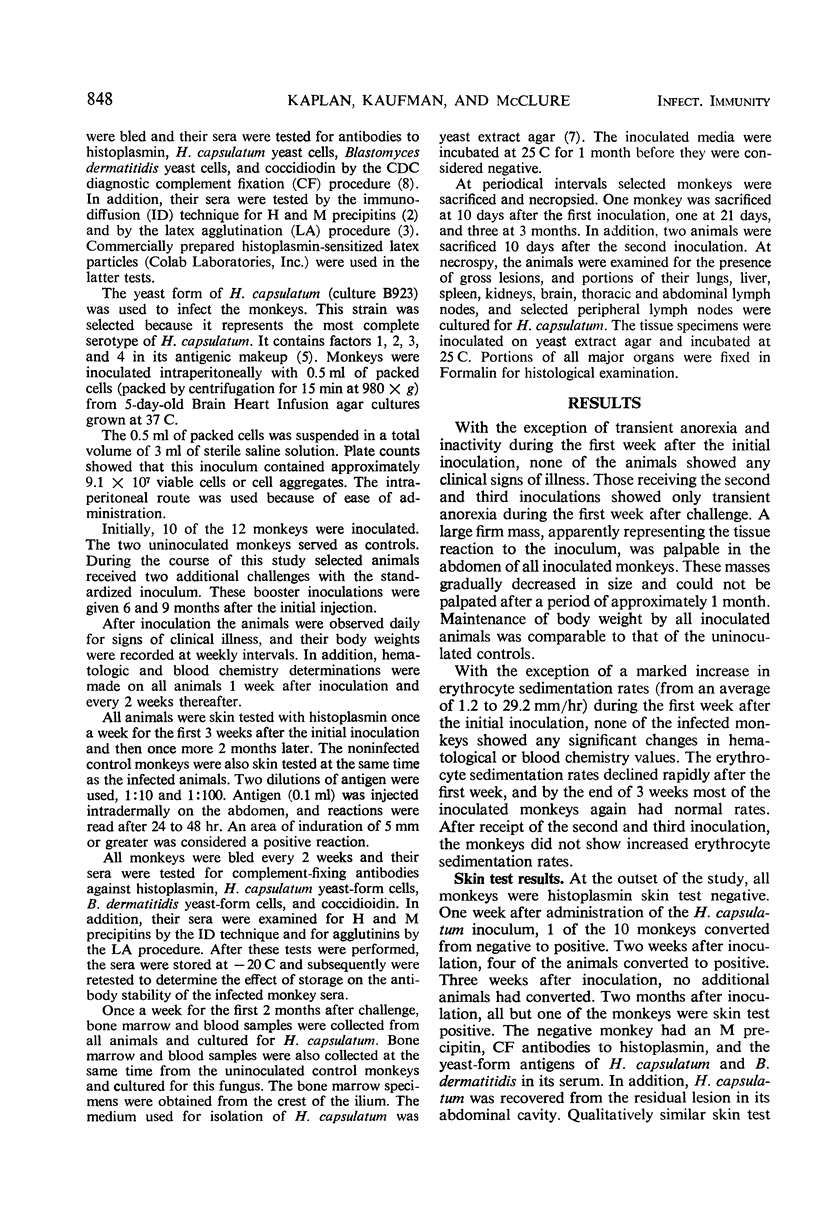
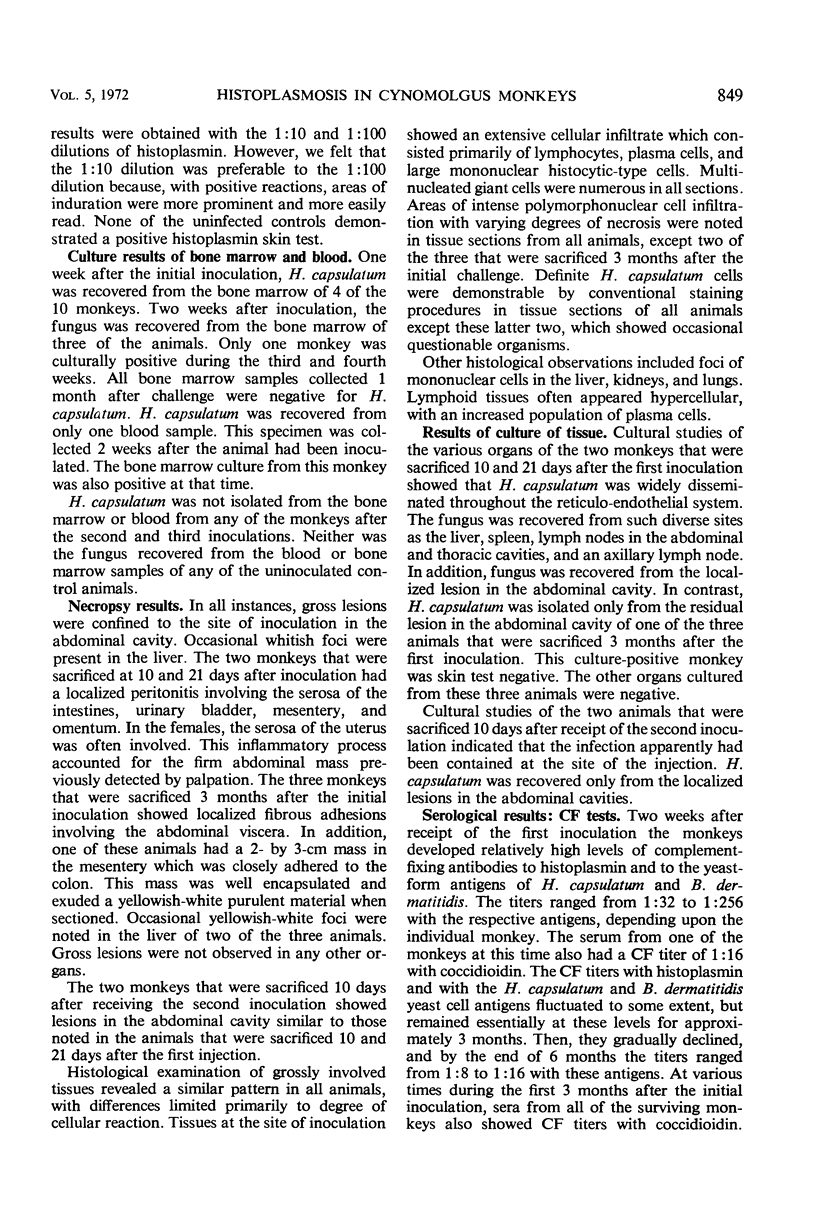
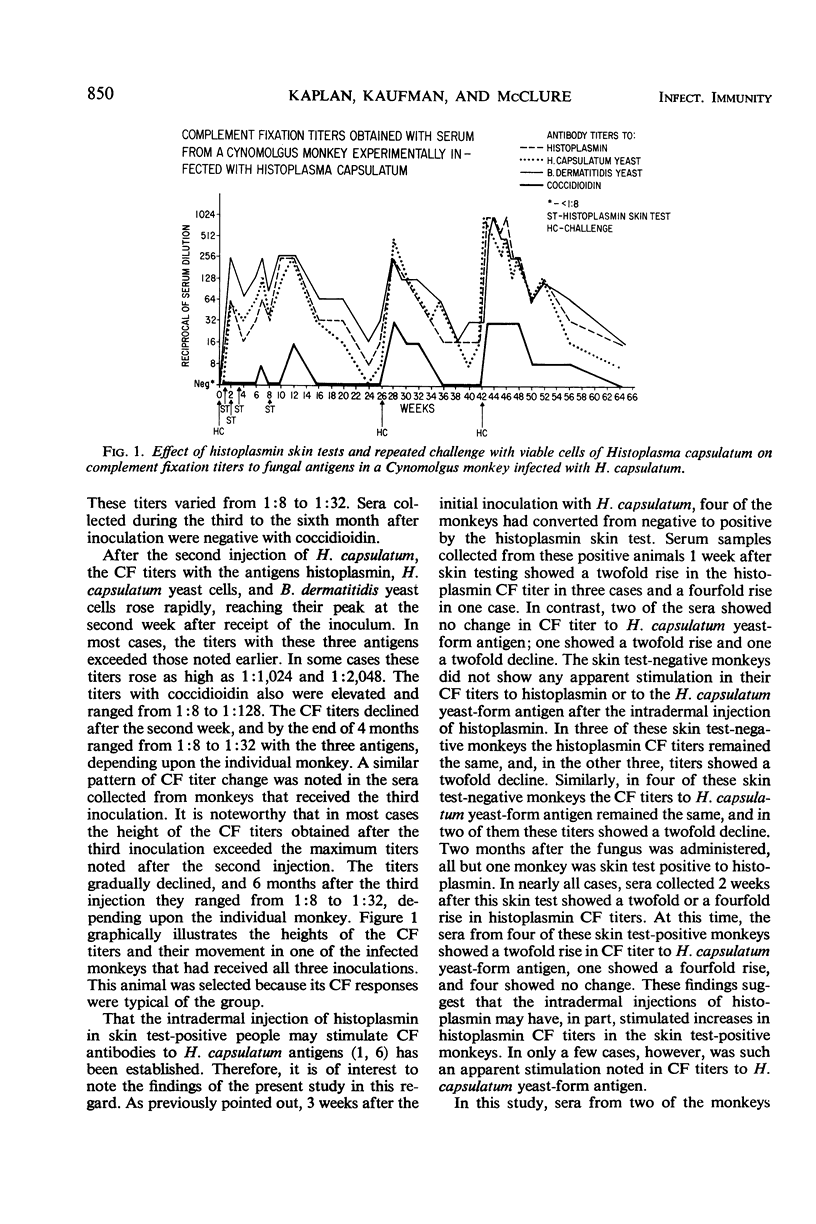
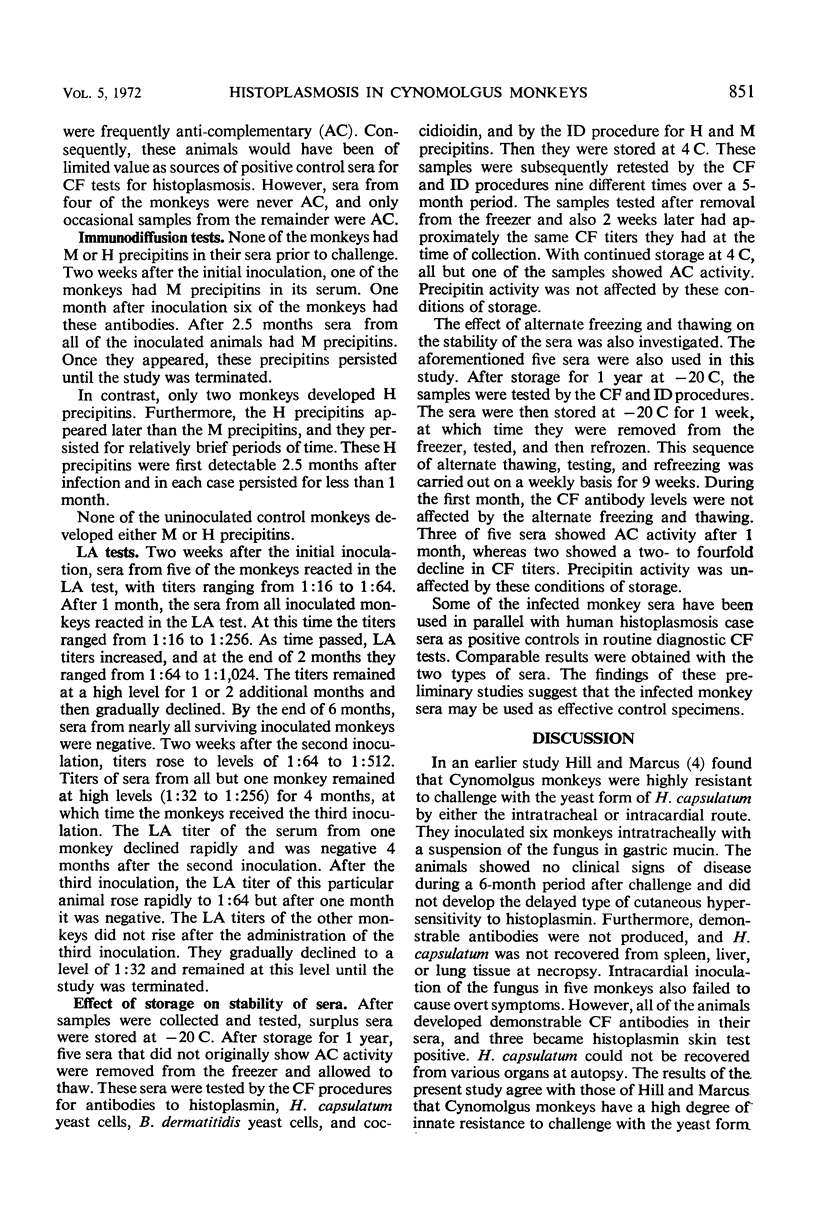
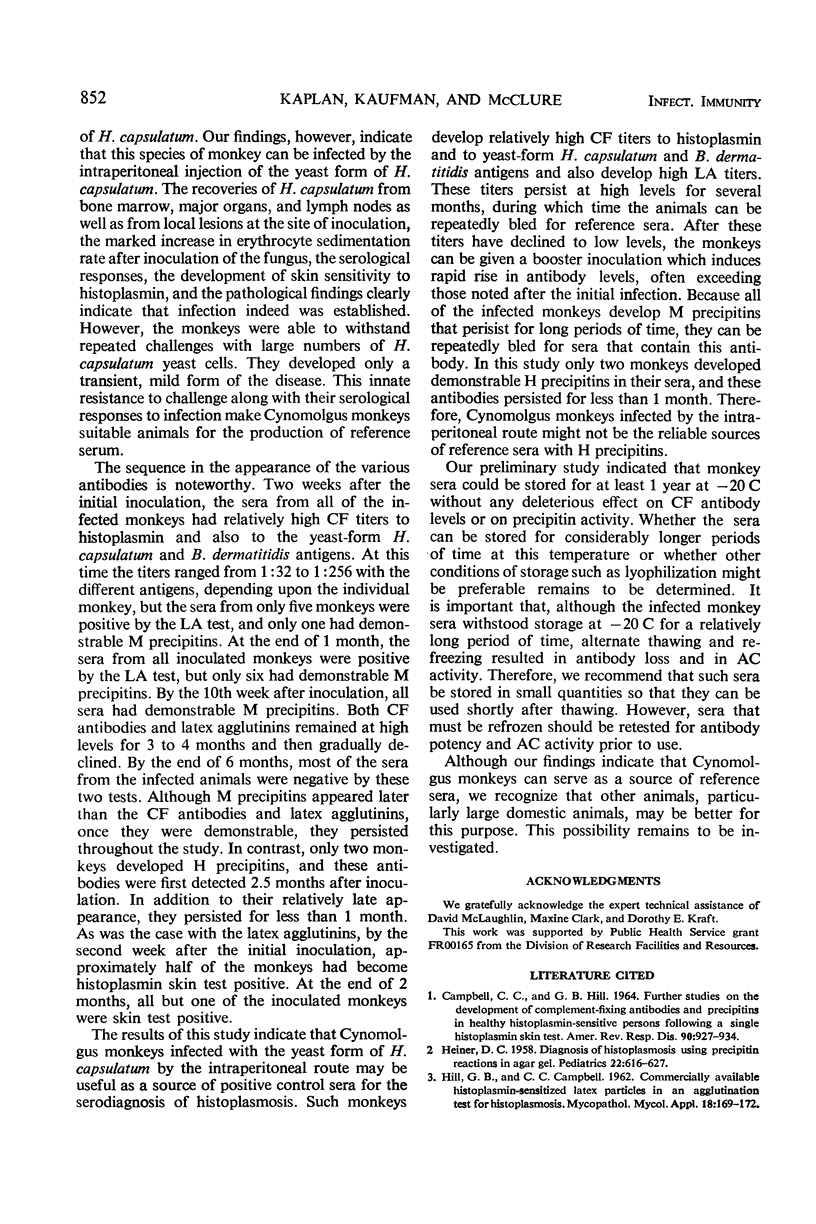
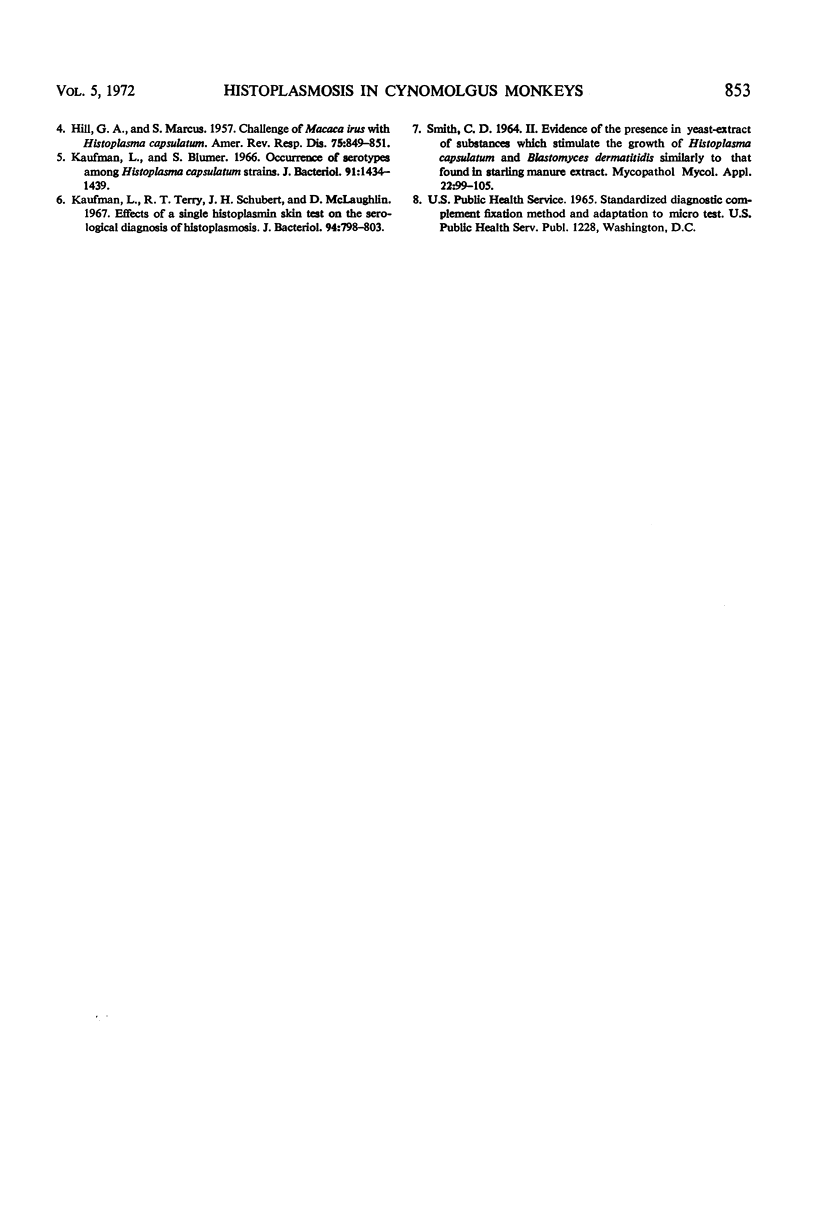
Selected References
These references are in PubMed. This may not be the complete list of references from this article.
- CAMPBELL C. C., HILL G. B. FURTHER STUDIES ON THE DEVELOPMENT OF COMPLEMENT-FIXING ANTIBODIES AND PRECIPITINS IN HEALTHY HISTOPLASMIN-SENSITIVE PERSONS FOLLOWING A SINGLE HISTOPLASMIN SKIN TEST. Am Rev Respir Dis. 1964 Dec;90:927–934. doi: 10.1164/arrd.1964.90.6.927. [DOI] [PubMed] [Google Scholar]
- HEINER D. C. Diagnosis of histoplasmosis using precipitin reactions in agargel. Pediatrics. 1958 Oct;22(4 Pt 1):616–627. [PubMed] [Google Scholar]
- HILL G. A., MARCUS S. Challenge of Macacus irus with Histoplasma capsulatum. Am Rev Tuberc. 1957 May;75(5):849–851. doi: 10.1164/artpd.1957.75.5.849. [DOI] [PubMed] [Google Scholar]
- Kaufman L., Blumer S. Occurrence of serotypes among Histoplasma capsulatum strains. J Bacteriol. 1966 Apr;91(4):1434–1439. doi: 10.1128/jb.91.4.1434-1439.1966. [DOI] [PMC free article] [PubMed] [Google Scholar]
- Kaufman L., Terry R. T., Schubert J. H., McLaughlin D. Effects of a single histoplasmin skin test on the serological diagnosis of histoplasmosis. J Bacteriol. 1967 Oct;94(4):798–803. doi: 10.1128/jb.94.4.798-803.1967. [DOI] [PMC free article] [PubMed] [Google Scholar]


